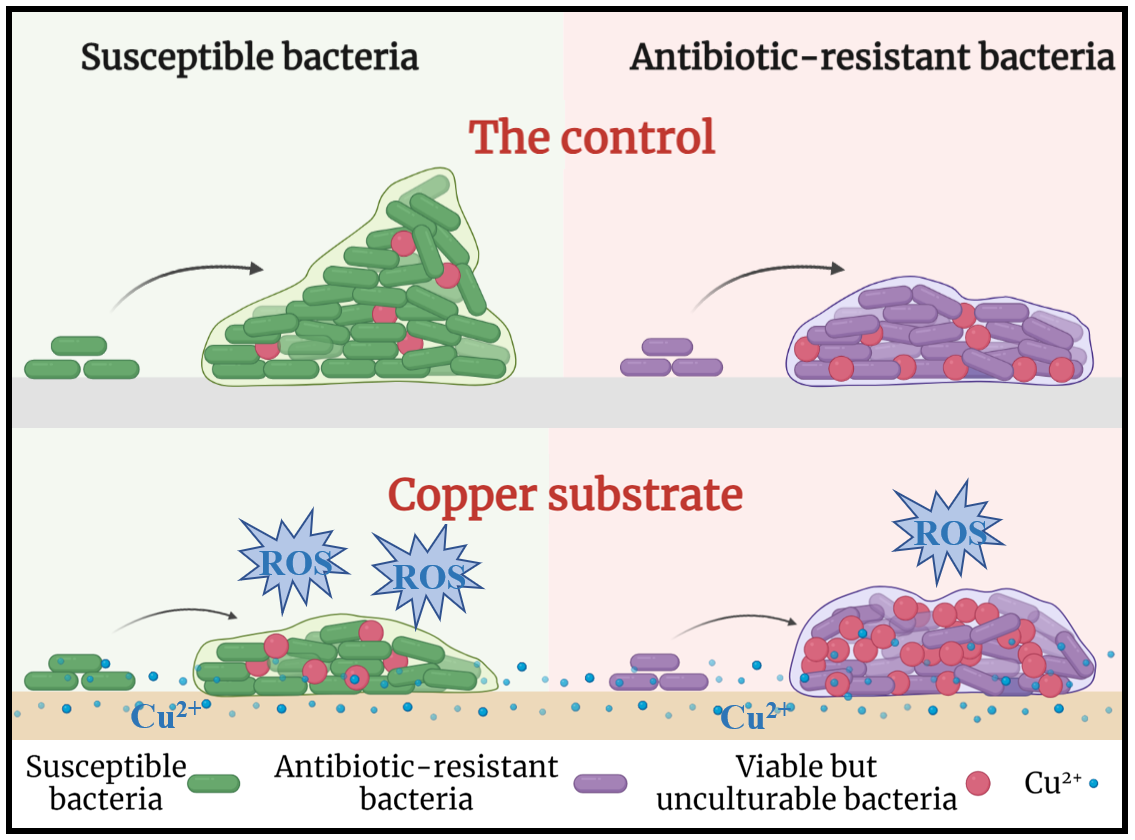《Different Fitness Costs during Biofilm Growth from Antibiotic-Resistant Bacteria to Antibiotic-Sensitive Bacteria Under the Toxicity Stress of Copper Substrate》

Website: https://doi.org/10.1021/acsestwater.4c00603
Graphical Abstract:

Cover of the paper:

ABSTRACT:
In water supply systems, copper pipes are commonly used to prevent bacterial growth and biofilm formation. However, it is uncertain whether copper can effectively inhibit antibiotic-resistant bacteria (ARB) biofilm formation, which is crucial for water supply safety. This study examined the difference in biofilm formation between ARB and antibiotic-sensitive bacteria (ASB) on copper surfaces by measuring extracellular polymeric substance (EPS) content. In the blank control group, ASB biofilms outperformed ARB biofilms; however, when exposed to copper, the bacterial abundance of ARB biofilm was 100.5–101.0times higher than that of ASB biofilms, and the EPS content was also 101.1–101.9times higher. This disparity was mainly attributed to the varying fitness costs of ARB in different environments. Furthermore, the oxidative stress response of ARB was significantly lower than that of ASB on a copper substrate, and the intracellular reactive oxygen species (ROS) level in ARB was only 78.7% of ASB. Gene expression patterns revealed that ARB biofilm formation on the copper substrate was mainly caused by the c-di-GMP-activated signaling pathway rather than the SOS stress system activated by ROS. These findings have implications for the choice of copper products in water supply systems.